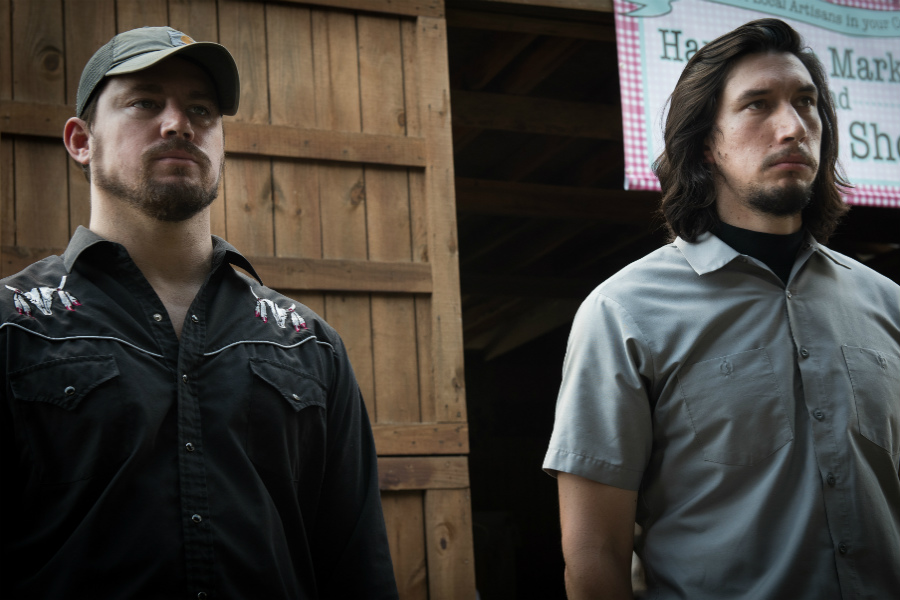Juanita Milton, who suffers from COPD, uses her nebulizer with albuterol sulfate at her home in Live Oak, Texas.
Carolyn Van Houten for Kaiser Health News
hide caption
toggle caption
Carolyn Van Houten for Kaiser Health News
After a lifetime of smoking, Juanita Milton needs help breathing.
She’s tethered to an oxygen tank 24/7 and uses two drug inhalers a day, including Spiriva, which she calls “the really expensive one.”
“If I can’t afford it, I won’t take it,” Milton says.
The 67-year-old’s chest was heaving one recent morning from the effort of walking down the hallway into the kitchen. Her voice was constricted as she loaded medication into a device about the size of her palm.
“Capsule in. You close it and you push this blue button,” Milton says, demonstrating how the device punctures the pill. She then takes two labored breaths to inhale the powder inside the capsule. “And that’s it.”
Milton, like many Medicare enrollees, is on a fixed income. She has $2,000 a month to pay for a mortgage, car payment, Medicare premiums and other expenses.
“I got to stretch out that, plus I have the less costly medicines that I have to pay for and also my oxygen,” Milton says. “You can only stretch it so far.”
An estimated 1 in 9 Medicare beneficiaries are diagnosed with chronic obstructive pulmonary disease, or COPD. And, in 2014, COPD was the third-leading cause of death in the country, according to the U.S. Centers for Disease Control and Prevention. Inhalers like Spiriva and Advair account for billions in Medicare spending each year.
Yet, even if they are only responsible for monthly copays, many enrollees like Milton can’t afford their inhalers. Milton depends on free samples provided by her doctor for her prescription of one inhaler, Breo Ellipta, but the supply is limited, so she regularly skips one of the two daily doses. And, in order to afford her Spiriva, she applied for drugmaker Boehringer Ingelheim’s financial assistance program and received one year’s worth of free samples.
But, on a recent morning, Milton was down to two doses of Spiriva. Holding up a silver sleeve of medication, Milton says “This is all I have left. So, if [the drugmaker doesn’t] approve me for this year, I’m going to have to ask Dr. Stigall if there’s something else I can take.”
Dr. Brian Stigall of Hill Country Medical Associates in New Braunfels, Texas, keeps a closet full of free drug samples for patients like Milton.
Dr. Brian Stigall of Hill Country Medical Associates saves inhaler samples for his Medicare patients.
Sarah Jane Tribble/Kaiser Health News
hide caption
toggle caption
Sarah Jane Tribble/Kaiser Health News
“Thank goodness, the drug reps are good. They bring us lots of samples,” Stigall says. “I save those samples back for those Medicare patients.”
Without the inhalers, patients suffer, he says. “They are going to end up back in the hospital and they’re going to end up seeing me much more often.”
Patients who suffer a full-blown attack, due to low oxygen intake, could need three to seven days of emergency treatment, Stigall says.
Retiree Ken Wagar, who lives in Winter Haven, Fla., buys his inhalers overseas. Instead of paying Medicare copays of more than $500 for three-month supplies of Advair and Spiriva, Wagar pays $248 for the same amount of Advair and $73 for Spiriva.
“It’s common and easy,” says Wagar, 68. “You have to order in advance because it takes a while to ship. … You do what you have to do.”
Across the country, doctors who treat COPD say costs are a common problem for patients. Dr. David Mannino at the University of Kentucky College of Public Health says some patients cut pills in half or take a prescription once a day instead of twice, just to save money.
Dr. Momen Wahidi, a pulmonologist at Duke University School of Medicine, says many patients “weren’t able to use [an inhaler because they] couldn’t get it, couldn’t afford it.” And, when Dr. Peter Castaldi of Brigham and Women’s Hospital in Boston surveyed thousands of Medicare patients in 2006, up to a third said they couldn’t take their medication because of cost.
“Even at a relatively, seemingly, low amount of $20 per month out-of-pocket costs, you could see the effects of cost on people being able to take their medications,” Castaldi says.
And prices have only increased since 2006. Spiriva’s list price has jumped 31 percent the past five years to $368 for a 30-day supply, according to drugmaker Boehringer Ingelheim. And Breo Ellipta’s price has risen 20 percent since 2013 to $321.74 a month, according to drugmaker GlaxoSmithKline.
Spokespeople for both drug companies say insured patients would not pay those prices because of discounts, rebates and other price concessions negotiated with insurers and pharmacy benefit managers. For example, GlaxoSmithKline estimated that the average out-of-pocket cost for patients with Medicare’s drug coverage, Medicare Part D, was $33 in 2015 when the drug’s list price was $281 for a month’s supply.
Inhaler samples provided by pharmaceutical representatives who visit the Hill Country Medical Associates in New Braunfels, Texas.
Sarah Jane Tribble/Kaiser Health News
hide caption
toggle caption
Sarah Jane Tribble/Kaiser Health News
But it’s “not unusual [for patients] to be on more than one inhaler” and those costs add up, says Dr. Chien-Wen Tseng, with the University of Hawaii John A. Burns School of Medicine and the Pacific Health Research and Education Institute.
In a recent letter published in JAMA, Tseng analyzed Medicare’s prescription drug formularies in 2015 and the projected cost of deductibles and copays. She found that Medicare Part D beneficiaries with multiple inhalers could spend more than $2,800 in out-of-pocket costs annually.
The high price of inhalers is expensive for the Medicare program and “drives people into the doughnut hole,” she says. The dreaded doughnut hole is a coverage gap for Medicare Part D patients. Enrollees pay more for drugs out-of-pocket once the coverage gap is reached.
“Medicare Part D was really designed in 2006 with 2006 prices,” Tseng says. In 2017, with much higher drug prices, “does Medicare Part D really still work?”
For Milton, the answer seems obvious: It doesn’t.Most mornings after taking her Spiriva, Milton sits on her back patio. There, she talks with God.
“I don’t pray,” she says. “I talk. I carry on a conversation.”
And that conversation often turns to her struggles with COPD.
“I understand and I have to accept it. I know that it was my doing,” Milton says, adding, “everything is in his hands.”
Sarah Jane Tribbleis a senior correspondent atKaiser Health News, an editorially independent newsroom that is part of the nonpartisan Henry J. Kaiser Family Foundation.
Let’s block ads! (Why?)















